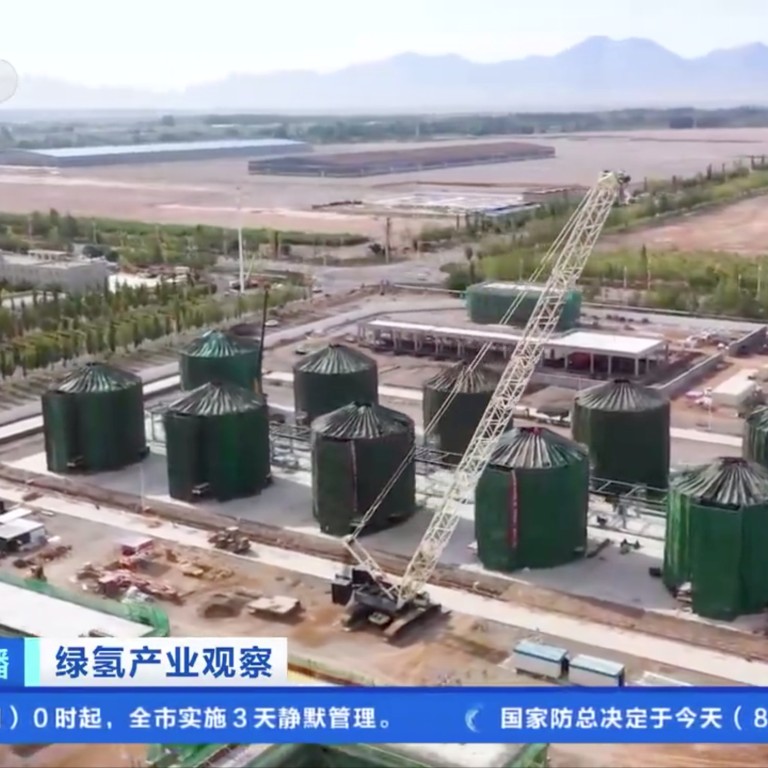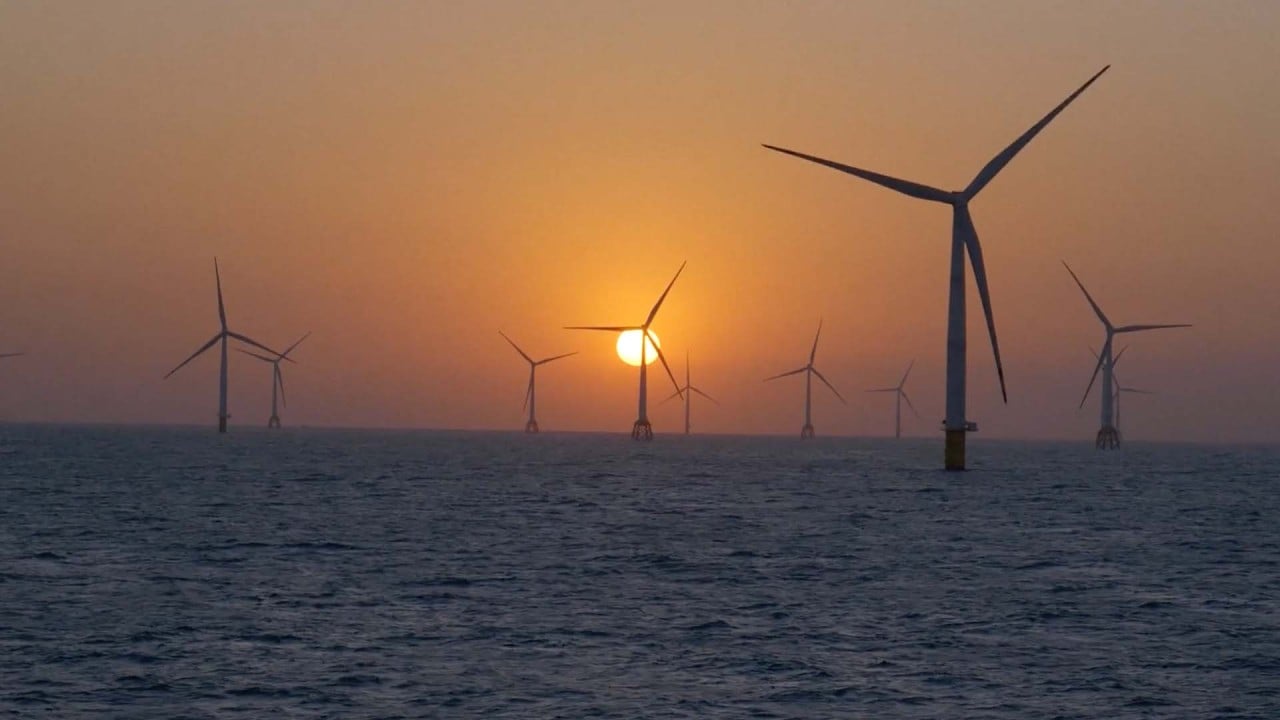
China building world’s largest ‘green hydrogen’ factory
- The facility in Xinjiang will use renewable energy to break down water into oxygen and hydrogen, the latter of which can then be liquefied and used as fuel
- The facility should help to reduce the country’s carbon emissions by around 500,000 tonnes a year, according to state media reports
The project in Kuqa in the south of the region uses renewable energy sources, including solar and wind power, to produce hydrogen that can then be liquefied and transported long distances through natural gas pipelines and help tackle energy shortages in the most populated parts of the country.
The dirty secret of China’s green goals: retiring turbines, solar panels
The factory, built as part of the country’s Peak Carbon Dioxide Emissions plan, is designed to produce 20,000 tonnes of hydrogen a year.
The “green hydrogen” is produced using electricity produced from renewable sources to break water down into its two constituent elements of hydrogen and oxygen.
This cleaner energy source is designed to replace “grey hydrogen”, which uses fossil fuels instead of renewable ones, and should reduce annual carbon dioxide emissions by about 500,000 tonnes, according to a report by state broadcaster CCTV on Thursday.
The site is currently under construction and the solar panels will cover an area of more than 630 hectares (1,560 acres), equivalent to the size of more than 900 soccer fields, the broadcaster added.
“Xinjiang region is rich in sunlight resources, making it a perfect place to explore green hydrogen production. The cost of hydrogen production here from photovoltaic electrolysis is only 18 yuan (US$2.67) per kilogram,” Cao Jie, a manager from Sinopec working at the site, told CCTV.
Ling Yiqun, another manager from the state-owned energy giant, added: “We estimate that in the future, the whole petroleum industry will create a market with a size of more than 100 billion yuan (US$14.8 billion) by replacing grey hydrogen with green hydrogen.”
Li Bo, from the National Energy Administration, told CCTV hydrogen fuel batteries have advantages when used in vehicles due to their high performance and long operating range.
One kilogram of hydrogen could produce the same amount of heat as 4 litres (1 gallon) of petrol and the cost is expected to fall as it becomes more widely used.
Beijing released a plan earlier this month to encourage green hydrogen production.
“In the future, hydrogen production from water electrolysis will become the largest load of the power system, accounting for more than 20 per cent of the total electricity consumption,” Dai Jianfeng, deputy chief engineer of the Electric Power Planning Design General Institute, told CCTV.
China ‘confident’ on 2030 climate goal despite global energy crisis
Last month a researcher from the Ministry of Industry and Information Technology said hydrogen could help solve the country’s geographical imbalance in energy production and consumption.
“Renewable energy resources are concentrated in northwestern China, while high energy consumption plants and most fuel cell battery vehicles are located in the eastern part,” Cui Zhiguang wrote in a paper published in the journal Industry Perspective last month.
“The surplus energy in the western part, once converted to hydrogen, could be sent to eastern China through existing natural gas pipelines, thus alleviating the energy constraints.”


